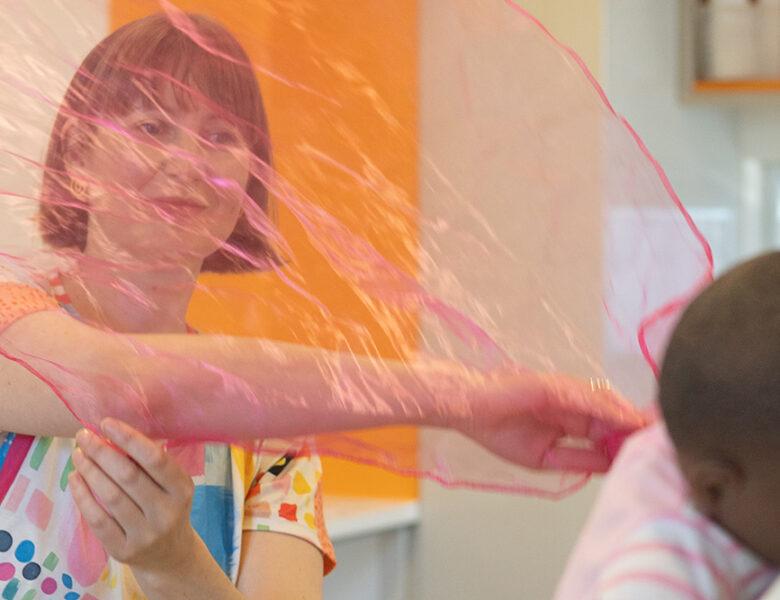Dance Movement Therapy for new mums
We are proud to support Dance Movement Therapy for mothers at Helen Mayo House, a Women’s and Children’s Health Network facility that provides inpatient services for parents who have significant mental health problems in the postnatal period.
Mothers experiencing mental health problems can experience difficulties in bonding with their babies and regulating both their own, and their baby’s, emotions.
Dance Movement Therapy is evidence-based, trauma-informed and strengths-focused. The psychosomatic therapy uses creative movement and arts-based therapeutic interventions for regulation and expression of emotions through motion.
Mums can engage in joyful, spontaneous play, making sessions a powerful tool to get to the heart of issues in a simple and direct way, as well as being accessible even for those who are struggling to engage in talk therapy.
Movements used in these sessions develop regulation, and co-regulation between mother and baby, which supports optimal emotional and cognitive development for infants.
Expressive movements are used as a way of nonverbal communication and help to connect to self and others, as well as creatively explore skills like attachment in a supported and safe space.

Tanya Voges with women shown representing Dance Movement Therapy participants.
Tanya Voges is a Creative Arts Therapist who specialises in Dance Movement Therapy and who runs these group sessions at Helen Mayo House twice a week.
She says, “I’ve developed this program to meet the needs of parent and infant in an acute perinatal unit, using movement and music to support regulation and connection.”
Sessions differ from non-therapeutic dance as there isn’t planned choreography or a specific structure needing to be met, they are led by the mood of the group.
Tanya holds a safe space for mums, providing co-regulating movement to songs, so that they can experience regulation and work towards co-regulation with their babies. It is a ‘yes’ environment where there are no wrong ways of participating.
A session could consist of checking in with mums at the beginning and trying to create connections between the group, warming mums up to movement by starting with some art, and then working up to dance movement.

Tanya showing what a Dance Movement Therapy session can look like.
Preliminary observations have indicated positive benefits of Dance Movement Therapy, with staff at Helen Mayo House noticing that mums appreciate having different ways to approach therapy such as this.
Tanya says that, upon discharge from Helen Mayo House, mums have expressed how helpful their sessions have been, and some have even enquired about continuing to engage with Dance Movement Therapy.
Back to all news


